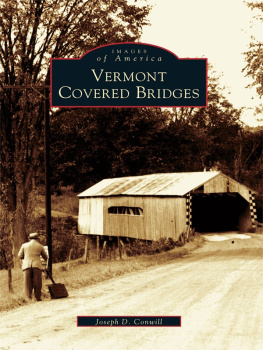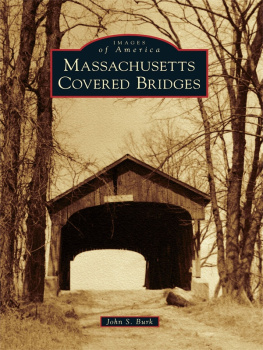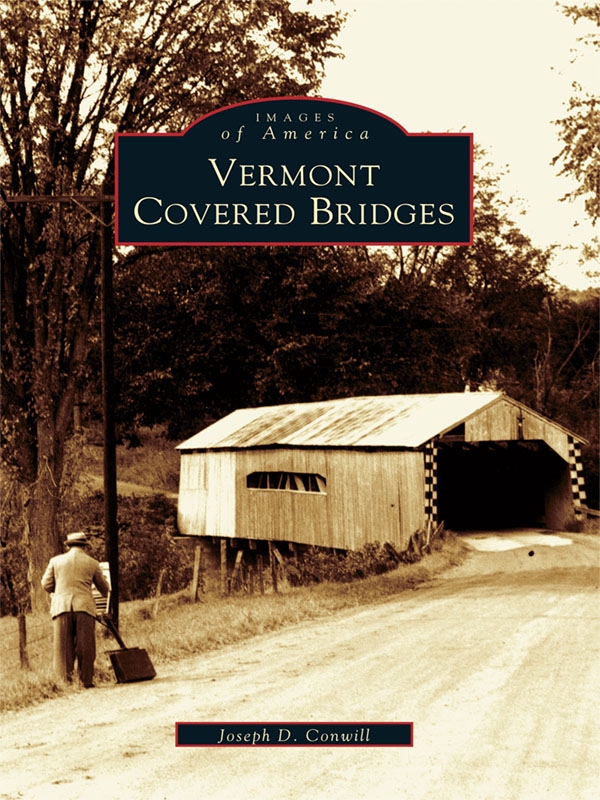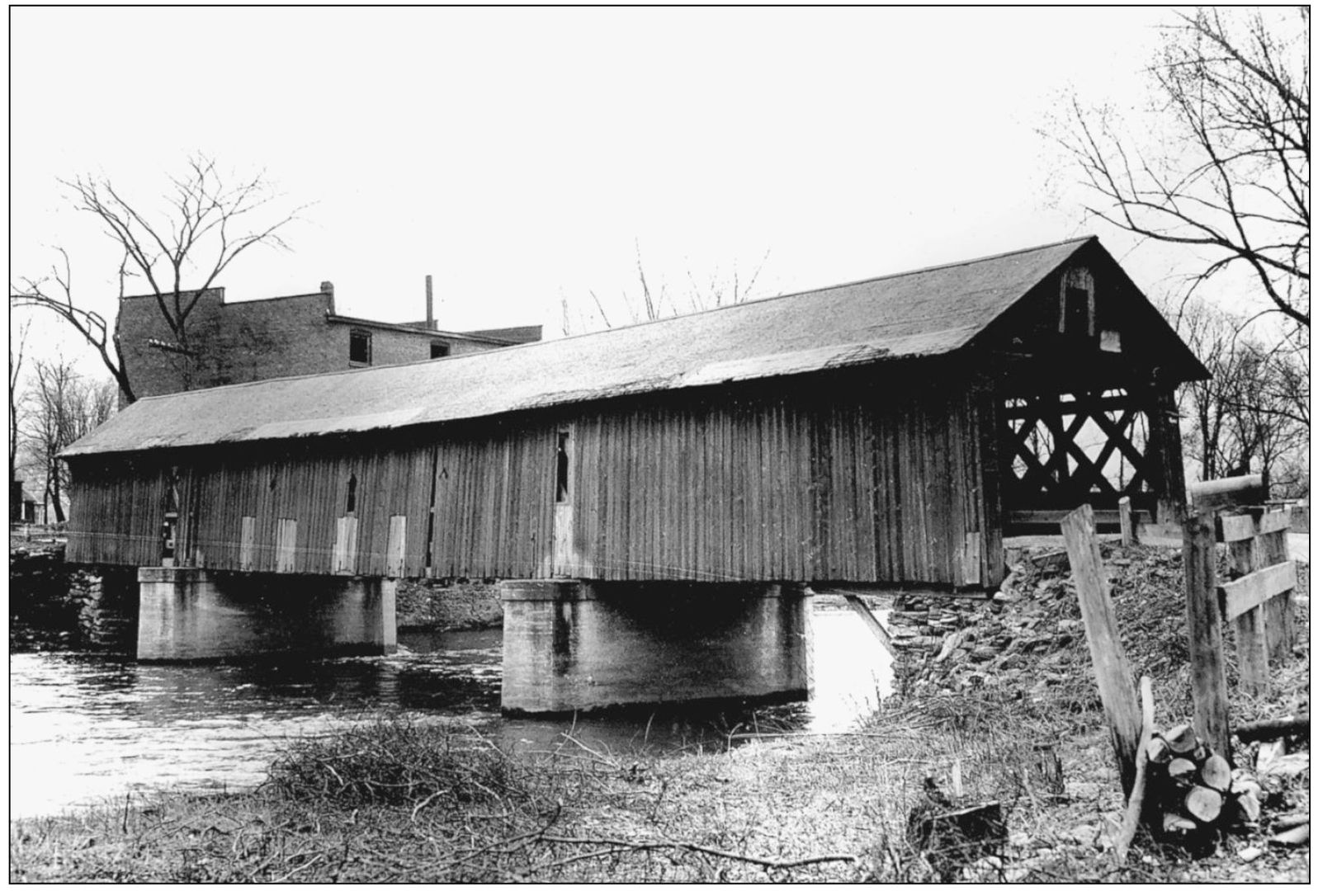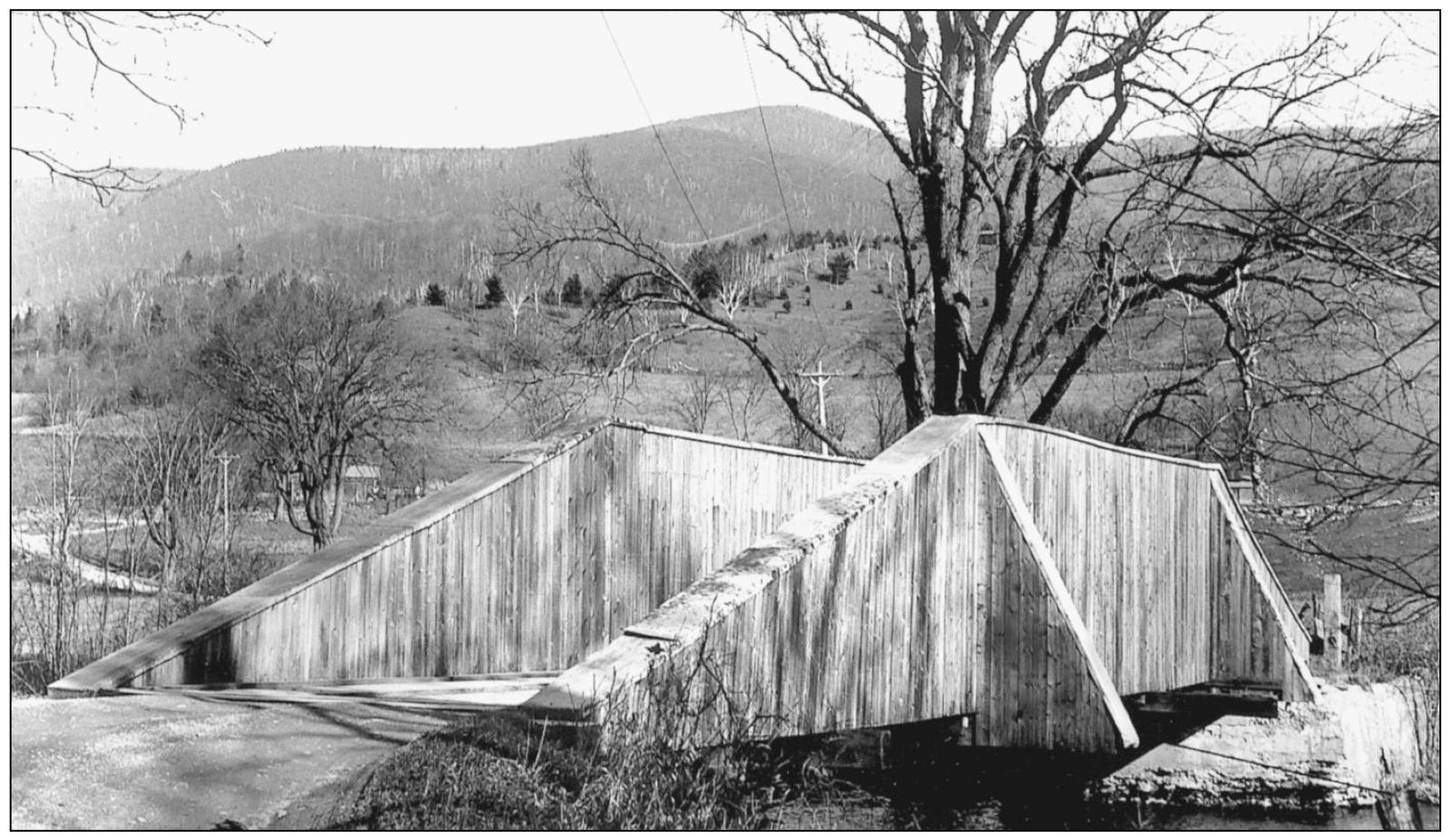One
SOUTHWEST
BENNINGTON AND RUTLAND COUNTIES

Bennington County is located in Vermonts southwest corner, and most of the covered bridge history involves the Hoosic River, the Walloomsac River, and the Batten Kill (not the Batten Kill River, which is redundant as kill is a local word of Dutch origin and means river). These streams flow westward toward the Hudson River, and there is much related covered bridge history over the state line in Washington County, New York. The southeastern part of the county is drained by the Deerfield River, which flows south into Massachusetts. Most of Rutland Countys waters eventually reach Lake Champlain. Clarendon, just south of Rutland, was home to Vermonts best-known covered bridge builder, Nichols Montgomery Powers, several of whose bridges still serve traffic in the region. North Pownal Bridge, shown here, crossed the Hoosic River in Vermonts southwest corner. It is thought to have been built in the 1830s by Noel Barber, who also built a covered bridge at nearby Pownal. After serving for over a century, it was lost in the hurricane of 1938. (Richard Sanders Allen, c. 1937.)
Here is another view of North Pownal Bridge. The river name is the Hoosic River, the village over the state line in New York is Hoosick, and the mountain with its famous railroad tunnel in western Massachusetts is Hoosac. (Richard Sanders Allen.)
Pownal Bridge is thought to have been another Noel Barber product, built in 1834 or slightly afterward. It was torn down in 1949. (Henry A. Gibson, April 25, 1943.)
Upper Bridge in Searsburg crossed the Deerfield River on a remote back road to Somerset. It was removed for the construction of Searsburg Reservoir in 1915. The radically flared siding style was common in southern Oregon but very unusual in Vermont. It may have protected flying buttresses, or it may have been intended simply to direct rain runoff far from the critical lower chords of the truss. (Richard Sanders Allen collection.)
Lower Bridge crossed the Deerfield River on state Route 9, about two miles southeast of the village of Searsburg. (Oscar Lane notebooks.)
Henry Bridge, located over the Walloomsac River near North Bennington, was built c. 1840. It was torn down in 1989 and replaced with a replica built in the same style but with all new timber. (Henry A. Gibson, April 11, 1943.)
Due to heavy loads from the nearby iron industry, Henry Bridge was reinforced with additional truss work not long after it was built. The additions were poorly designed and were removed during repairs in 1952. (Henry A. Gibson, April 11, 1943.)
A view underneath the old Henry Bridge shows its floor system, which was complicated by the additional truss work. (Henry A. Gibson, April 11, 1943.)
West Arlingtons 1852 vintage covered bridge still carries travelers over the Batten Kill near the former home of artist Norman Rockwell. (Henry A. Gibson, August 29, 1943.)
West Arlingtons covered bridge has been painted red for about a half-century, and most people have forgotten that it was once unpainted. (Richard Sanders Allen collection.)
Vermonts boxed pony trusses were close historical relatives of covered bridges, but they lacked the romantic appeal of the other bridges, and none are left today. Benedicts Crossing spanned the Batten Kill between Arlington and West Arlington. An interesting non-covered, polygonal timber arch bridge now serves the site. (Richard Sanders Allen, November 9, 1941.)
McCauley Bridge crossed the Roaring Branch of the Batten Kill about one mile north of the village of Arlington. It was built in 1856 and lost in the great flood of 1927. The rustic-looking road later became U.S. Route 7. Today, it is known as the Historic Route 7A. (Oscar Lane notebooks.)
Chiselville Bridge is located near East Arlington but is over the town line in Sunderland. Today, the side view of the bridge is much less magnificent than this one, as the structure is now propped from below by concrete pilings. (Henry A. Gibson, August 29, 1943.)

